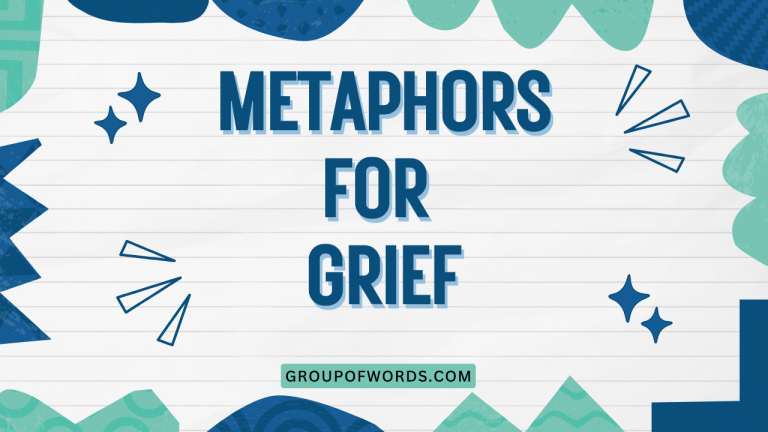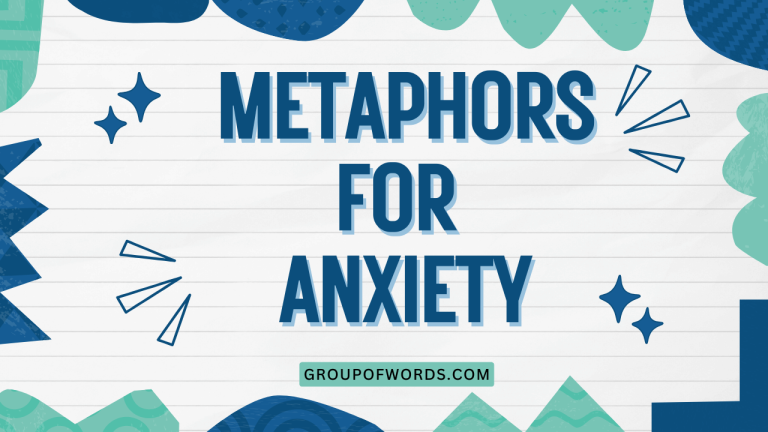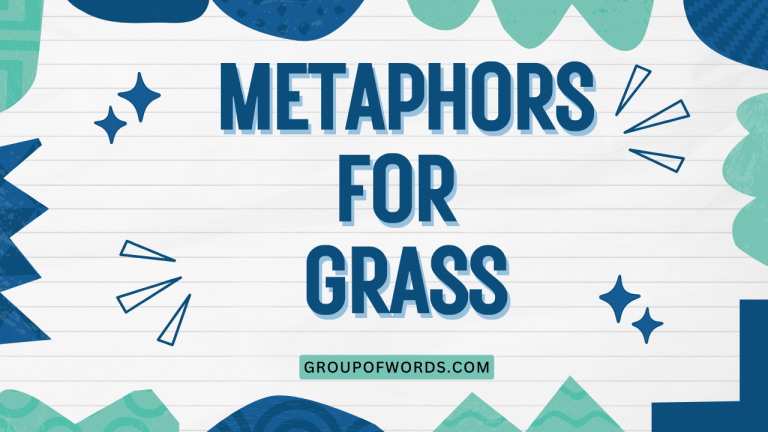Similes for Hope: A Comprehensive Guide to Figurative Language
Understanding similes is crucial for mastering figurative language, adding depth and color to your writing and speech. Similes, in particular, when used to express hope, can powerfully convey emotions and ideas.
This article delves into the realm of similes for hope, exploring their structure, usage, and impact. Whether you’re an English language learner, a student, or simply someone who loves language, this guide will equip you with the knowledge and tools to effectively use similes to express hope.
This article will provide a comprehensive exploration of similes used to describe hope, covering their definition, structural breakdown, various categories, and usage rules. It also addresses common mistakes, provides practice exercises, and delves into advanced topics for more seasoned learners.
By the end of this guide, you’ll be able to not only recognize similes for hope but also create your own, enhancing your communication skills and adding a touch of eloquence to your expression.
Table of Contents
- Introduction
- Definition of Similes for Hope
- Structural Breakdown of Similes
- Types of Similes for Hope
- Examples of Similes for Hope
- Usage Rules for Similes
- Common Mistakes When Using Similes
- Practice Exercises
- Advanced Topics
- Frequently Asked Questions (FAQ)
- Conclusion
Definition of Similes for Hope
A simile is a figure of speech that compares two unlike things using the words “like” or “as.” Similes for hope specifically use this comparison to evoke the feeling or concept of hope. These similes can paint vivid pictures, making the abstract idea of hope more concrete and relatable.
They offer a powerful way to express the nature, strength, or fragility of hope in various contexts.
The function of a simile for hope is to enhance understanding and emotional connection. By drawing a parallel between hope and something familiar, the writer or speaker can make the feeling of hope more accessible and impactful.
This can be especially useful when describing complex situations or trying to inspire others. The context in which a simile for hope is used significantly influences its interpretation.
A simile used in a dire situation might emphasize the tenacity of hope, while one used in a moment of calm might highlight its gentle nature.
Structural Breakdown of Similes
The basic structure of a simile consists of three main components: the subject (in this case, hope), the comparison word (“like” or “as”), and the object of comparison. Understanding this structure is essential for creating effective and meaningful similes.
Here’s a breakdown:
- Subject: The thing being described, which is “hope.”
- Comparison Word: “Like” or “as.” These words explicitly signal a comparison.
- Object of Comparison: The thing that hope is being compared to. This is crucial for conveying the specific nuance of hope you wish to express.
For example, in the simile “Hope is like a fragile seedling,” “hope” is the subject, “like” is the comparison word, and “a fragile seedling” is the object of comparison. The effectiveness of a simile lies in the relationship between the subject and the object of comparison.
The more resonant and insightful the comparison, the more impact the simile will have. Let’s consider some more examples to illustrate this point further.
Types of Similes for Hope
Similes for hope can be categorized based on the specific aspect of hope they emphasize. These categories help to understand the different ways hope can be expressed through figurative language.
Positive and Uplifting Similes
These similes portray hope as something strong, bright, and encouraging. They often use imagery of light, strength, or resilience to convey a sense of optimism and possibility.
Tenuous and Fragile Similes
These similes depict hope as delicate, vulnerable, and easily broken. They often use imagery of fragility, such as glass, a butterfly, or a whisper, to emphasize the precious and precarious nature of hope in difficult situations.
Similes of Growth and Development
These similes illustrate hope as something that starts small but has the potential to grow and flourish. They often use imagery of seeds, sprouts, or budding flowers to represent the development and strengthening of hope over time.
Examples of Similes for Hope
The following tables provide examples of similes for hope categorized by the types discussed above. Each example illustrates a different facet of hope and its expression through figurative language.
Positive Similes Examples
These examples showcase hope portrayed as something strong, bright, and encouraging. They often use imagery of light, strength, or resilience to convey a sense of optimism and possibility.
The table below provides a range of examples to illustrate this type of simile.
| Simile | Explanation |
|---|---|
| Hope is like a lighthouse in a storm. | Hope provides guidance and safety during difficult times. |
| Hope is as bright as the morning sun. | Hope brings warmth and new beginnings. |
| Hope is like a sturdy oak tree, standing strong against the wind. | Hope represents resilience and unwavering strength. |
| Hope is as powerful as a roaring waterfall. | Hope has immense force and potential. |
| Hope is like a warm blanket on a cold night. | Hope provides comfort and security. |
| Hope is as clear as a mountain spring. | Hope is pure and refreshing. |
| Hope is like a guiding star in the darkness. | Hope provides direction and purpose. |
| Hope is as vibrant as a rainbow after the rain. | Hope brings color and beauty after hardship. |
| Hope is like a soaring eagle, free and unburdened. | Hope represents freedom and potential. |
| Hope is as unwavering as the North Star. | Hope remains constant and reliable. |
| Hope is like a shield against despair. | Hope protects against negative emotions. |
| Hope is as strong as a lion’s roar. | Hope is powerful and assertive. |
| Hope is like a bridge over troubled waters. | Hope offers a way to overcome challenges. |
| Hope is as radiant as a diamond. | Hope is precious and brilliant. |
| Hope is like a song that lifts your spirits. | Hope brings joy and encouragement. |
| Hope is as steady as a heartbeat. | Hope is essential and life-sustaining. |
| Hope is like a compass guiding you home. | Hope provides direction and a sense of belonging. |
| Hope is as resilient as bamboo in the wind. | Hope is flexible and able to withstand adversity. |
| Hope is like a wellspring of inner strength. | Hope provides a source of power and resilience. |
| Hope is as bright as a beacon in the night. | Hope serves as a guiding light in times of uncertainty. |
| Hope is like a warm embrace after a long journey. | Hope offers comfort and reassurance. |
| Hope is as invigorating as a breath of fresh air. | Hope revitalizes and renews the spirit. |
| Hope is like a phoenix rising from the ashes. | Hope represents rebirth and renewal after destruction. |
| Hope is as unbreakable as a promise. | Hope is reliable and steadfast. |
Tenuous Similes Examples
These examples depict hope as delicate, vulnerable, and easily broken. They often use imagery of fragility, such as glass, a butterfly, or a whisper, to emphasize the precious and precarious nature of hope in difficult situations.
The following table highlights the fragility of hope.
| Simile | Explanation |
|---|---|
| Hope is like a fragile glass ornament, easily shattered. | Hope can be easily destroyed by negative events. |
| Hope is as delicate as a butterfly’s wing. | Hope is easily damaged and requires careful nurturing. |
| Hope is like a faint whisper in a loud storm. | Hope can be easily drowned out by overwhelming negativity. |
| Hope is as thin as ice on a winter lake. | Hope is precarious and could break at any moment. |
| Hope is like a flickering candle flame in the wind. | Hope can be easily extinguished by adversity. |
| Hope is as fragile as a newborn bird. | Hope is vulnerable and in need of protection. |
| Hope is like a single thread holding together a torn fabric. | Hope is the last thing preventing complete collapse. |
| Hope is as fleeting as a dream. | Hope can disappear quickly and unexpectedly. |
| Hope is like a single raindrop in a desert. | Hope is rare and precious in a desolate situation. |
| Hope is as breakable as a promise whispered in the dark. | Hope can be easily broken or forgotten. |
| Hope is like a dandelion seed floating on the breeze. | Hope is carried by chance and may not take root. |
| Hope is as vulnerable as a sapling in a forest fire. | Hope is at risk of being destroyed by overwhelming forces. |
| Hope is like a paper boat on a stormy sea. | Hope is easily overwhelmed by challenges. |
| Hope is as fragile as a spider’s web glistening with dew. | Hope is delicate and easily disturbed. |
| Hope is like a whispered secret, easily overheard and lost. | Hope can be betrayed or forgotten. |
| Hope is as tender as a bruise. | Hope is sensitive and easily re-injured. |
| Hope is like a single star barely visible through the clouds. | Hope is faint and difficult to see in times of trouble. |
| Hope is as delicate as the first bloom of spring. | Hope is new and easily damaged by harsh conditions. |
| Hope is like a forgotten melody, barely remembered. | Hope can fade with time and hardship. |
| Hope is as fragile as trust. | Hope can be easily broken. |
| Hope is like a paper airplane thrown into the wind. | Hope’s path is uncertain and easily diverted. |
| Hope is as easily crushed as a flower underfoot. | Hope is vulnerable to thoughtless actions. |
| Hope is like a soap bubble, beautiful but fleeting. | Hope is temporary and can burst unexpectedly. |
| Hope is as precarious as walking a tightrope. | Hope requires balance and can easily lead to a fall. |
Growing Similes Examples
These examples illustrate hope as something that starts small but has the potential to grow and flourish. They often use imagery of seeds, sprouts, or budding flowers to represent the development and strengthening of hope over time.
These similes highlight the potential for growth and resilience.
| Simile | Explanation |
|---|---|
| Hope is like a tiny seed, waiting to sprout. | Hope begins small but has the potential to grow. |
| Hope is as a small flame that grows into a fire. | Hope can start small but become powerful. |
| Hope is like a sapling reaching for the sun. | Hope grows stronger with time and effort. |
| Hope is as persistent as a vine climbing a wall. | Hope steadily progresses even through obstacles. |
| Hope is like a budding flower in spring. | Hope represents new beginnings and growth. |
| Hope is as resilient as grass pushing through concrete. | Hope can emerge even in the most difficult circumstances. |
| Hope is like a slow-growing tree, its roots deepening over time. | Hope becomes stronger and more stable with experience. |
| Hope is as unstoppable as a river carving its path. | Hope persistently moves forward despite challenges. |
| Hope is like a small ember that can ignite a roaring fire. | Hope has the potential to create significant change. |
| Hope is as enduring as the rings of a tree, each year adding strength. | Hope accumulates resilience and wisdom over time. |
| Hope is like a muscle that grows stronger with each use. | Hope becomes more powerful with practice and exercise. |
| Hope is as expansive as the branches of a growing tree. | Hope extends its reach and influence over time. |
| Hope is like a small stream that eventually joins the ocean. | Hope contributes to a larger, more significant outcome. |
| Hope is as fertile as soil in springtime. | Hope fosters growth and new opportunities. |
| Hope is like a melody that builds to a powerful crescendo. | Hope increases in intensity and impact. |
| Hope is as persistent as roots seeking water. | Hope relentlessly pursues its goals. |
| Hope is like a seed germinating in darkness. | Hope can develop even in unfavorable conditions. |
| Hope is as progressive as a plant turning towards the sunlight. | Hope seeks out positive influences and opportunities. |
| Hope is like a bud slowly unfurling its petals. | Hope reveals its beauty and potential gradually. |
| Hope is as nurturing as sunlight on a growing plant. | Hope provides essential support for development. |
| Hope is like a butterfly emerging from its chrysalis. | Hope transforms and evolves into something beautiful. |
| Hope is as unstoppable as the tide coming in. | Hope is a natural and inevitable force. |
| Hope is like a snowball rolling down a hill, gathering momentum | Hope grows bigger and stronger as it progresses. |
| Hope is as life-giving as rain to parched earth. | Hope revitalizes and brings renewal. |
Usage Rules for Similes
Using similes effectively requires understanding certain rules and guidelines. While similes offer creative freedom, adhering to these rules ensures clarity and impact.
- Ensure a Clear Comparison: The two things being compared should have a recognizable connection. The comparison should be relevant and insightful.
- Avoid Clichés: Overused similes, like “as busy as a bee,” can sound unoriginal and lack impact. Strive for fresh and creative comparisons.
- Maintain Consistency: The tone and imagery of the simile should align with the overall context of the writing or speech.
- Use Sparingly: Overusing similes can make your writing feel forced and unnatural. Use them judiciously to enhance specific points.
- Consider Your Audience: The effectiveness of a simile depends on whether your audience understands the object of comparison. Choose references that are relatable and accessible.
When crafting similes for hope, focus on creating comparisons that resonate emotionally and intellectually. The goal is to make the abstract concept of hope more tangible and understandable.
Common Mistakes When Using Similes
Even experienced writers sometimes make mistakes when using similes. Recognizing these common errors can help you avoid them and improve your writing.
| Mistake | Incorrect Example | Correct Example | Explanation |
|---|---|---|---|
| Using a cliché | Hope is like a light at the end of the tunnel. | Hope is like a small campfire in a vast, dark forest. | Avoid overused comparisons that lack originality. |
| Creating an unclear comparison | Hope is like a table. | Hope is like a sturdy table, providing support when you need it most. | Ensure the comparison is relevant and makes sense. |
| Mixing metaphors and similes | Hope is a fragile seedling, growing like a soaring eagle. | Hope is like a fragile seedling, carefully nurtured. | Maintain consistency in your figurative language. |
| Overusing similes | The day was like a dream. The sky was as blue as the ocean. The birds sang like angels. Hope was like a gentle breeze. | The day felt like a dream; hope drifted in like a gentle breeze. | Use similes sparingly for maximum impact. |
| Using an inappropriate comparison | Hope is like a rusty nail. | Hope is like a polished gem, reflecting light even in darkness. | Ensure the comparison aligns with the desired tone and message. |
| Using a simile that is too literal | Hope is like happiness. | Hope is like a compass, guiding you towards a brighter future. | The comparison should provide deeper insight or imagery. |
By being aware of these common mistakes, you can refine your use of similes and create more effective and impactful writing.
Practice Exercises
Test your knowledge of similes for hope with these practice exercises. Each question requires you to either identify a simile or create one based on a given scenario.
| Question | Answer |
|---|---|
| 1. Identify the simile: “Hope is as resilient as grass pushing through concrete.” | The simile is “Hope is as resilient as grass pushing through concrete.” |
| 2. Create a simile for hope in a situation of financial hardship. | Hope is like a small investment, promising future returns. |
| 3. Identify the simile: “Hope is like a fragile glass ornament, easily shattered.” | The simile is “Hope is like a fragile glass ornament, easily shattered.” |
| 4. Create a simile for hope in a situation where someone is feeling lost and confused. | Hope is like a guiding star in a dark night. |
| 5. Identify the simile: “Hope is like a tiny seed waiting to sprout.” | The simile is “Hope is like a tiny seed waiting to sprout.” |
| 6. Create a simile for hope in a situation where someone is facing a serious illness. | Hope is like a lifeline thrown to a swimmer in distress. |
| 7. Identify the simile: “Hope is like a lighthouse in a storm.” | The simile is “Hope is like a lighthouse in a storm.” |
| 8. Create a simile for hope in a situation where someone has experienced a significant loss. | Hope is like a gentle rain after a long drought. |
| 9. Complete the simile: Hope is as bright as… | Hope is as bright as the morning sun. |
| 10. Complete the simile: Hope is like… | Hope is like a warm blanket on a cold night. |
Additional Exercises:
- Rewrite the sentence using a simile: “Despite the challenges, they maintained hope.”
- Create three different similes for hope, each representing a different aspect (strength, fragility, growth).
- Identify the simile in the following passage: “The situation seemed dire, but hope remained, a tiny ember glowing in the darkness.”
- Write a short paragraph using at least two similes to describe the feeling of hope after a difficult experience.
- Explain the meaning and impact of the simile: “Hope is as unwavering as the North Star.”
Advanced Topics
For advanced learners, exploring the nuances of similes can lead to a deeper understanding of figurative language and its impact.
- Extended Similes: These are longer, more complex similes that develop the comparison over several sentences or even paragraphs.
- Subverted Similes: These are similes that intentionally break expectations or create ironic comparisons.
- Similes in Different Cultures: Explore how similes for hope vary across different cultures and languages, reflecting unique perspectives and values.
Analyzing the works of famous writers and poets can provide valuable insights into the effective use of similes. Pay attention to how they use similes to create vivid imagery, evoke emotions, and convey complex ideas.
Consider how historical and cultural contexts influence the choice and interpretation of similes. For example, similes used during times of war may carry different connotations than those used during periods of peace.
Experiment with creating your own extended and subverted similes to challenge your understanding of figurative language.
Frequently Asked Questions (FAQ)
Here are some frequently asked questions about similes for hope:
- What is the difference between a simile and a metaphor?
A simile compares two things using “like” or “as,” while a metaphor directly equates two things without using these words. For example, “Hope is like a light” (simile) vs. “Hope is a light” (metaphor).
- How can I avoid using clichés when creating similes?
Think outside the box and try to find unique and original comparisons. Consider your personal experiences and observations for inspiration. The more specific and personal your simile, the less likely it is to be a cliché.
- Can a simile be too long?
Yes, a simile can be too long if it becomes overly detailed or convoluted. The comparison should be clear and concise, even in extended similes. Focus on maintaining a clear connection between the two things being compared.
- How do I choose the right object of comparison for a simile about hope?
Consider the specific aspect of hope you want to emphasize. If you want to highlight its strength, choose an object of comparison that represents strength. If you want to highlight its fragility, choose an object that represents fragility. Think about the emotions and associations you want to evoke.
- Are similes only used in writing?
No, similes are used in both writing and speech. They are a common tool for adding color and emphasis to everyday conversations and public speaking.
- How can I improve my ability to create effective similes?
Practice regularly by writing similes for different concepts and situations. Read widely and pay attention to how other writers use similes. Ask for feedback on your similes and be open to suggestions for improvement.
- What role does context play in understanding similes?
Context is crucial for understanding similes because it provides the necessary background information for interpreting the comparison. The same simile can have different meanings depending on the context in which it is used. Consider the surrounding text, the speaker’s tone, and the overall situation when interpreting a simile.
- How do similes contribute to the overall impact of a piece of writing?
Similes enhance the impact of writing by creating vivid imagery, evoking emotions, and making abstract concepts more concrete and understandable. They can also add depth and complexity to the writing, making it more engaging and memorable. Effective similes can transform ordinary writing into something extraordinary.
Conclusion
Similes for hope are powerful tools for expressing the nuances of this essential emotion. By understanding their structure, types, and usage rules, you can effectively incorporate them into your writing and speech.
Remember to avoid clichés, maintain consistency, and consider your audience to create impactful and meaningful comparisons.
Mastering similes, especially those related to abstract concepts like hope, is a continuous process. Practice creating your own similes, analyze examples from literature, and be mindful of the context in which you use them.
With dedication and attention to detail, you can unlock the full potential of similes and elevate your communication skills to new heights. Embrace the creative freedom that similes offer and use them to paint vivid pictures and evoke powerful emotions in your audience.






